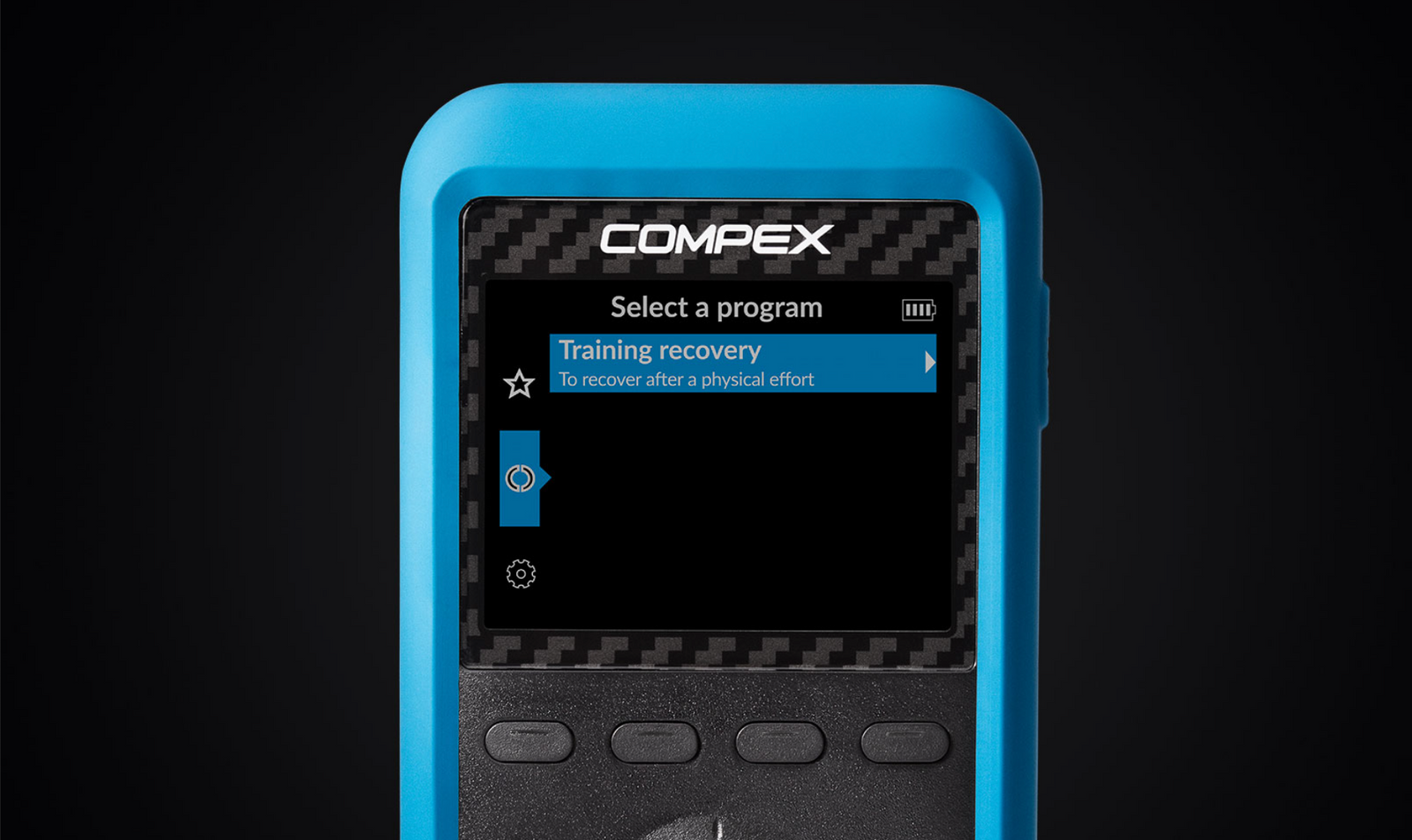The thing about technology is that it keeps advancing. Just ten years ago, your Nokia Razor had a cool new feature - SMS. Technology trickles, and now your phone is a “smartphone”, which is essentially a handheld computer with a camera almost better than your Nikon DSLR and a microphone that rivals beginner studio mics. Just like your phone, electric muscle stimulators EMS have come a long way since the TENS unit was first introduced in 1974. EMS has become increasingly popular in the last few years with brands like Compex, the MarcPro, and Powerdot dropping into the functional fitness scene, helping functional and competitive athletes optimize training outcomes. But how different is electric muscle stimulation than a transcutaneous electrical nerve stimulator? We’re going to talk about differences, similarities, and whether you should be spending that hard earned money on a TENS or EMS.
What Is TENS
Transcutaneous electrical nerve stimulation (TENS) is a non-invasive pain-relief technique. A small handheld device, known as a TENS unit, admits low current electrical stimulation via thin wires connected to adhesive pads known as electrodes. These electrodes adhere to the skin sending signals that can interrupt the interpretation of pain signals.
What Is EMS
EMS or electrical muscle stimulation is a technique commonly used by physical therapists and fitness enthusiasts. Similar to the TENS unit, EMS is a small handheld device, that admits electrical current via thin wires and electrodes. A key different is that EMS is applied to specific muscle groups to help with the exercise recovery process or rehabilitation. EMS sends a stronger electrical current than a TENS unit and is not used for treatment of post surgical pain, chronic pain, or wound sites.
TENS Vs EMS: What Is The Difference
Both TENS units and EMS operate on the same principle of electrical current. Compex for example, uses transcutaneous electrical nerve stimulation in their device the Compex Edge 3.0 to electrically stimulate the muscles. PowerDot markets their Powerdot 2.0 as more than a TENS device combining the effectiveness of TENS and NMES or neuromuscular electrical stimulation.
The biggest difference between a TENS and EMS is in the user interface. Unlike a TENS unit EMS devices come with an app which can provide more detailed analytics and usage reports on performance and recovery. Apps also provide more access to controlling your device, For example, Powerdot EMS is controlled via their app, instead of providing a handheld unit.
EMS devices use different modes or programs and are engineered with more features marketed to help athletic performance outcomes such as strength, endurance, and recovery. The electrical signal triggers repeated or patterned contractions of the muscles used to jumpstart the muscle fibers and train them for a specific intent or function, reducing fatigue, optimizing muscle recovery, and decreasing pain.
This also accounts for the staggering difference price between a TENS and EMS, $19.99 vs $350.
Admittedly, EMS devices like Compex and PowerDot are marketed as an elite athlete recovery tool. A TENS unit is not. It’s used by physicians in pain management, chiropractors, and physical therapists to help with pain management, not with athletic performance.
Do TENS and EMS Work
The research on electrical stimulators is very mixed and conflicting. TENS units are indicated as a noninvasive, nonpharmacological intervention that activates a complex neuronal network to reduce pain by activating descending inhibitory systems in the central nervous system to reduce hyperalgesia. Essentially, the electrical stimulation blocks the interpretation of pain signals when the sensory neurons interpret the stimulation in a specific area of pain.
This can provide some temporary relief; however long-term efficacy is not well established. Efficacy is dose dependent, meaning that intensity or dose of stimulation is a critical factor in TENS application. High frequencies and stronger stimulation can oftentimes exacerbate symptoms while lower intensities are ineffective. In the last decade there have been a number of systematic reviews/meta-analyses that have examined efficacy of TENS for pain reduction in people with pain, some showing efficacy while others showing none.
Since both EMS and TENS received FDA approval in 2021, these devices have become widely available to the public, as opposed to only having prior access to them with a prescription.
TENS Vs EMS: Takeaway
So can EMS devices and TENS help with muscle recovery, strength, and reduce muscle fatigue? That is still yet to be determined. Studies have shown however, that TENS can help with a specific indication of treating chronic or acute pain for temporarily relief. Traditional TENS units operate with constant electrical stimulation, giving the user the ability to adjust frequency and pulse width. EMS devices utilizing TENS technology, deliver stimulation in specific patterned contractions, utilizing different modes and programs. Overall, both TENS and EMS devices can help reduce chronic or acute pain and help with temporary relief. However utilizing these devices with a specific indication to help enhance athletic performance will still require additional human clinical trials to determine their efficacy as an ergogenic aid.
References
Review Transcutaneous electric nerve stimulation (TENS) for cancer pain in adults.Robb KA, Bennett MI, Johnson MI, Simpson KJ, Oxberry SGCochrane Database Syst Rev. 2008 Jul 16; (3):CD006276.[PubMed] [Ref list]
Review Transcutaneous electric nerve stimulation (TENS) for cancer pain in adults.Hurlow A, Bennett MI, Robb KA, Johnson MI, Simpson KH, Oxberry SGCochrane Database Syst Rev. 2012 Mar 14; (3):CD006276.[PubMed] [Ref list]
Review The use of transcutaneous electrical nerve stimulation (TENS) for pain relief in labour: a review of the evidence. Bedwell C, Dowswell T, Neilson JP, Lavender TMidwifery. 2011 Oct; 27(5):e141-8.[PubMed] [Ref list]
Review Transcutaneous electrical nerve stimulation for acute pain.Walsh DM, Howe TE, Johnson MI, Sluka KACochrane Database Syst Rev. 2009 Apr 15; (2):CD006142 [PubMed] [Ref list]
Review Transcutaneous electrical nerve stimulation (TENS) versus placebo for chronic low-back pain.Khadilkar A, Odebiyi DO, Brosseau L, Wells GACochrane Database Syst Rev. 2008 Oct 8; (4):CD003008.[PubMed] [Ref list]
Review Analgesic effects of treatments for non-specific low back pain: a meta-analysis of placebo-controlled randomized trials.Machado LA, Kamper SJ, Herbert RD, Maher CG, McAuley JHRheumatology (Oxford). 2009 May; 48(5):520-7 [PubMed] [Ref list]
Review Analgesic effects of treatments for non-specific low back pain: a meta-analysis of placebo-controlled randomized trials.Machado LA, Kamper SJ, Herbert RD, Maher CG, McAuley JHRheumatology (Oxford). 2009 May; 48(5):520-7.[PubMed] [Ref list]
Bjordal JM, Johnson MI, Lopes-Martins RA, Bogen B, Chow R, Ljunggren AE. Short-term efficacy of physical interventions in osteoarthritic knee pain. A systematic review and meta-analysis of randomised placebo-controlled trials. BMC Musculoskelet. Disord. 2007;8:51. [PMC free article] [PubMed] [Google Scholar] •• When given at adequate intensity and frequency, TENS produces a clinically significant reduction in pain in individuals with osteoarthritic pain. [Ref list]
Review Transcutaneous electrostimulation for osteoarthritis of the knee.Rutjes AW, Nüesch E, Sterchi R, Kalichman L, Hendriks E, Osiri M, Brosseau L, Reichenbach S, Jüni PCochrane Database Syst Rev. 2009 Oct 7; (4):CD002823.[PubMed] [Ref list]
Claydon LS, Chesterton LS. Does transcutaneous electrical stimuation (TENS) produce ‘dose-response’? A review of systematic reviews on chronic pain. Phys. Ther. Rev. 2008;13(6):450–463. [Google Scholar] • A systematic review of TENS trials in multiple chronic pain conditions with attention to TENS dose, protocol differences, and statistical power. [Ref list]







